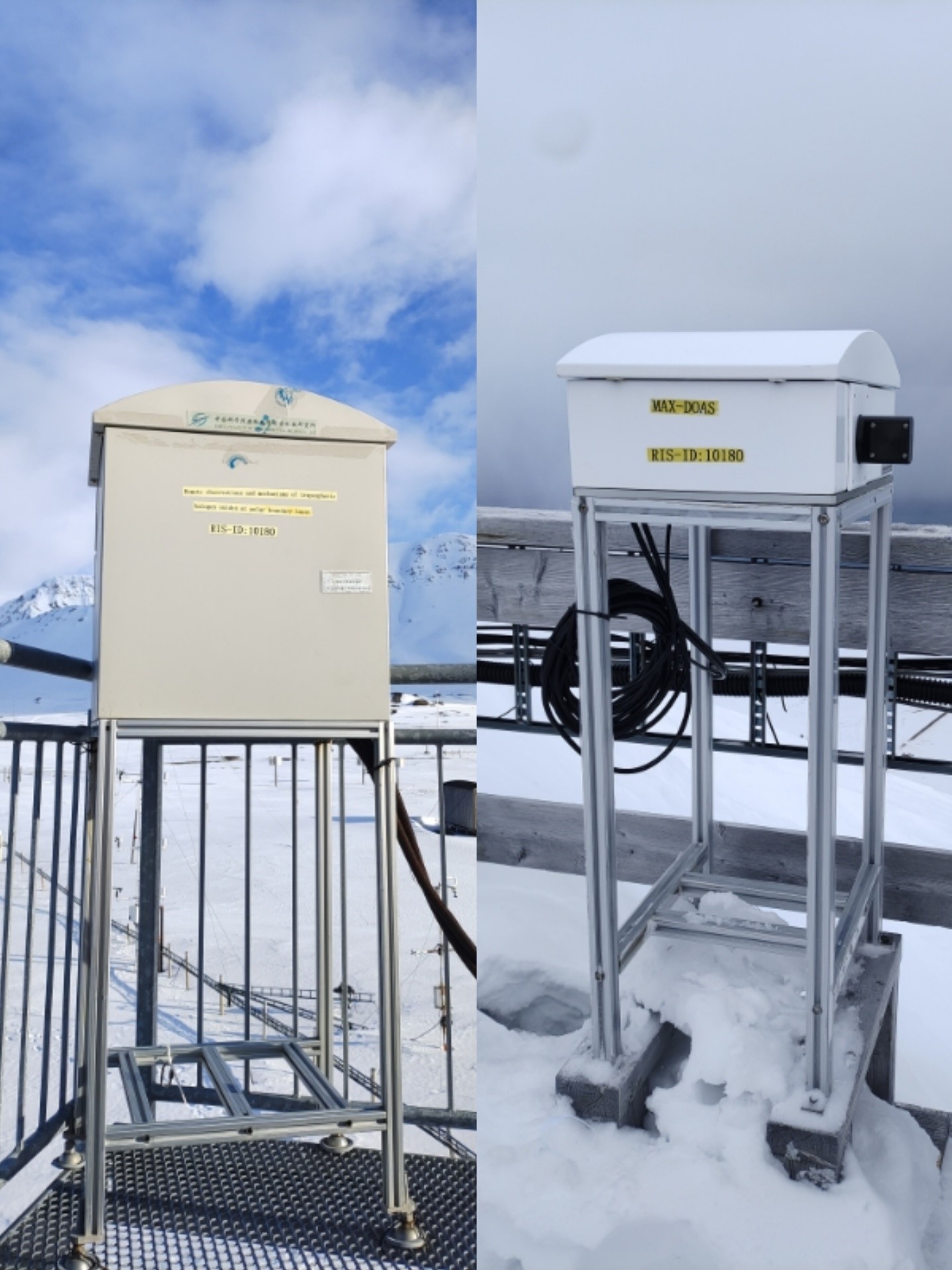This was the fifth time the AIOFM team dispatched engineers to do on-site maintenance of their equipment in Arctic. The spectral data intensity and spectral line shape of the instrument were dramatically improved.
Bromine explosion events (BEEs) are important processes that influence the atmospheric oxidation capacity, especially in the polar troposphere during spring. Although sea ice surface is thought to be a significant bromine source, bromine release mechanisms remain unclear.
The team is trying to figure it out.
According to previous study, bromine monoxide (BrO) is one of the key reactive halogen species which have profound impacts on the atmosphere chemistry of the polar boundary layer (PBL), especially the oxidative capacity of the troposphere. To target it, the team developed the ground-based DOAS and then installed it at the Yellow River Station and Zeppelin Station in Ny-Ålesund Arctic to acquire Column Density and distribution characterization of tropospheric BrO
Unlike other Arctic stations, Ny-Ålesund station is not completely surrounded by sea ice, as open water exists in the south of Svalbard throughout the year because of the influence of the North Atlantic Current. So, it is a perfect place to investigate different mechanisms which could cause BEE.
Over ten years have passed since the DOAS was installed at the research station in 2010. With support of the National Natural Science Foundation of China (Grant Nos.41941011 and 41676184) and the Youth Innovation Promotion Association of CAS (Grant No.2020439), research data has been massively acquired and analyzed to offer support for scientific research. It also detected the 2020 Arctic ozone depletion events (ODE) and tropospheric bromine explosion events (BEE) during Arctic Spring.
Now, the data continues to be transmitted back here. Their scientific exploration goes on.

DOAS at the research station in Ny-Ålesund Arctic (Image by LUO Yuhan)

